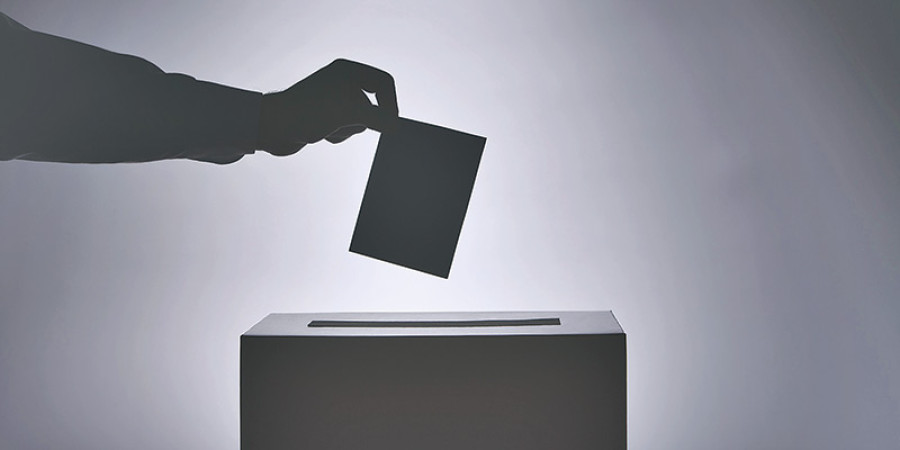Opinion
Towards tech-friendly polls
Local elections are the key drivers of a functioning democracy, a responsible opposition, the rule of law and strong institutions. So when local elections take place after nearly 20 years, it definitely brings a lot of joy.
Sujeev Shakya
Local elections are the key drivers of a functioning democracy, a responsible opposition, the rule of law and strong institutions. So when local elections take place after nearly 20 years, it definitely brings a lot of joy. It helps us to reflect on the connection we have with our culture and society, and gives us insight into how this connection can be enhanced.
Take, for example, the way in which the elections were announced, the symbols given to candidates, and the voting and the counting processes carried out. The chaos of the elections reflects the nature of our society, where planning and order have never been a priority. We have not been able to implement reforms and nothing much has changed in the past few decades in terms of the voting process. The fact that the system assumes that all people are still able to walk and reach the polling stations to cast votes, as was the case in times before, reflects how antiquated our thinking process is.
Privilege and entitlement
Our social, cultural and religious rituals do not follow any order. Look at the way any of the functions are held, from birth to death, corporate and social events, award functions or simple picnics—practices have hardly changed. No one knows what the rules are or what needs to be done. There will be one person with the loudest voice telling you what is right, which may be the complete opposite of how things are meant to be done.
Privilege and entitlement are also part of the story. Only those with ‘connections’ could take their mobile phones inside the voting area to take selfies. When I used social media to question why we were prohibited from taking our mobile phones into the voting area, I was inundated with asinine comments that made me delete what I had posted. The state thinks that it is doing the people a favour by holding the elections; it does not see voting as an integral process of the system where the people are supreme. While democracy is about freedom and responsibility, our discourse has only been focused on rights, be it on the part of the state or the people.
Tendency of mistrust
The fact that a citizen’s finger is marked by semi-permanent ink to ensure they can only vote once shows the complete lack of trust between the state and the citizens. In Nepal, there was a sense of distrust in the voting system during the rule of the monarchs, and this distrust is evident in the current republican system as well. New voter ID cards with QR codes were provided with much fanfare, but none of them were used. The way in which the names of voters are being verified at the time of voting and the way ballot papers are being scrutinised at the time of counting reflects complete mistrust in the system that the political parties have created. The Election Commission (EC) is, by mandate, in charge of the whole polling process, yet it is distrusted by the political parties. Conversely, the EC has little trust in the conduct of the political parties.
Nepal’s democratic practices have been under a lot of influence from India. Unfortunately, Nepal shares a border with the states of Bihar, Uttar Pradesh and West Bengal, which are notorious for the way they manage elections. Trust is a huge issue in these states, and this tendency of mistrust has spilled over in the way the election processes are perceived in Nepal. It will be interesting to see how the second phase of the local elections goes, as the system will be put to test in the areas that immediately border these Indian states.
Arnico moment
The government and its machinery knew that elections needed to happen once the constitution was promulgated, but true to our culture, we abstained from any proactive measures that would have helped the electoral process. A complicated procurement system has been created; this system does not help the government or the citizens get the best deal. Instead, it benefits only a connected few.
We need to learn from other countries: Leading the pack is Estonia, where 30.5 percent of the population voted through a device connected to the internet, sending their votes in from around the world. With a large migratory population, both internal and external, we need to ensure that every Nepali citizen who is eligible to vote can vote. A decade ago, I met a senior Nokia phone executive who was visiting Nepal to explore if a $8 phone could be developed to help Nepalis vote electronically. Just like we have leapfrogged wire phones to develop mobiles, we also need to surpass the Electronic Voting Machine (EVM) to vote through the internet.
If the government starts to think about the process for provincial and general elections, there are enough bright Nepali minds who can collaborate with the best in the world to create a state-of-the-art system. Now for the sceptical ‘poverty brokers’ who say Nepal is not ready for such a system, my only suggestion would be for them to go the remotest parts of Nepal and see how people use the internet—they will be utterly surprised. There will always be small sections of society for whom appropriate platforms will have to be made available.
Nepal has the opportunity to lead this process of change that can be emulated by other democracies around the world. We can have an Arnico moment that will give us another pan-Nepali identity and will tell the world that we changed the way people vote.




 16.12°C Kathmandu
16.12°C Kathmandu











